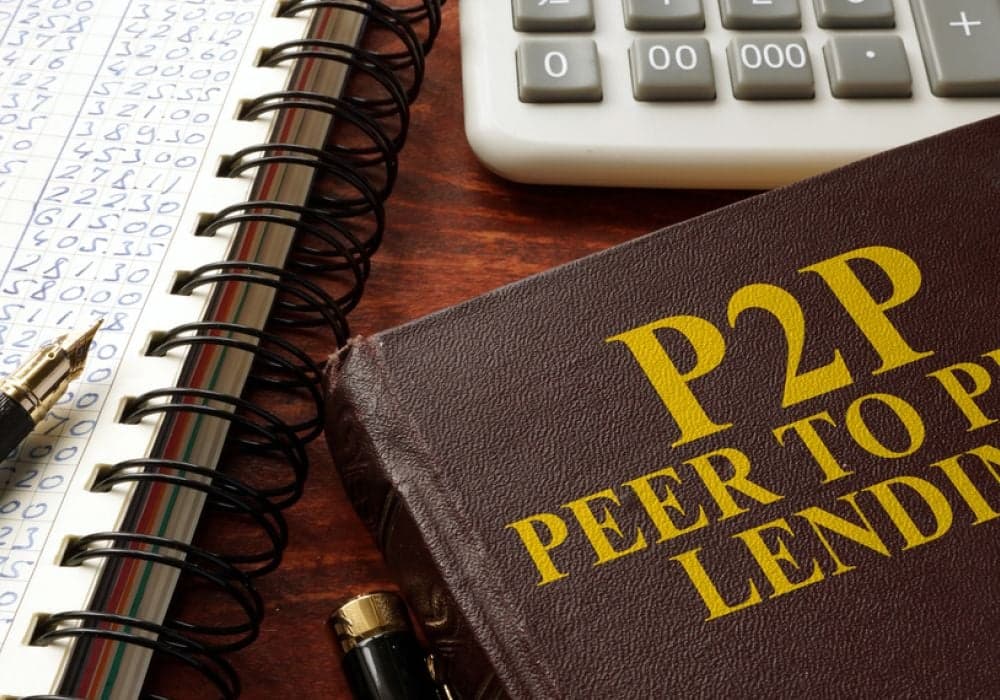
A Glimpse Of India Versus The Global P2P Lending Landscape, From 2000s To Present
2017 is being touted as the year of fintech startups in India. Although relatively young, the fintech market is undergoing a phase of rapid growth and is forecasted to cross $2.4 Bn by 2020, as per reports by KPMG India and NASSCOM. India is currently home to more than 500 fintech startups. Amidst the rising class of digital wallets, UPI, mPoS, one sector that is slowly and silently rearing its head is P2P lending (peer-to-peer lending).
Currently, at a nascent stage, the P2P lending landscape in India is also poised to grow into a $4 Bn-$5 Bn industry by 2023. The domain’s origin actually dates back to 2012, when the first peer-to-peer lending company i-Lend was launched. At present, the P2P lending space is populated by more than 30 players including Faircent, LendBox, LenDenClub, IndiaMoneyMart, Monexo, Rupaiya Exchange, LoanBaba, CapZest, i2iFunding and many more.
Alternative lending startups have already attracted $220.66 Mn in funding between 2015 and 2017, from industry stalwarts such as T.V. Mohandas Pai, Fusion Microfinance CEO Devesh Sachdev, Vikas Kapoor, Vikram Lakhotia, Tracxn Labs, VC firm M&S Capital Partners and more. Of this, nearly $50 Mn was secured in H1 2017 by i-Lend (undisclosed), LoanTap ($1.06 Mn), MoneyTap ($12.30 Mn), LoanMeet (undisclosed), ZipLoan ($0.65 Mn), EarlySalary ($4 Mn), Billionloans ($1 Mn) and others. This accounts for around 2.5% percentage of the overall fintech funding of $2 Bn during the said period, as per Inc42 Data Labs report.
To aid the domain’s growth in a structured and regulated fashion, the Reserve Bank of India (RBI) is finalising norms for peer-to-peer lending platforms, which will be made official this month. Based on a 17-page consultation paper that the nation’s central banking institution released back in April 2016, these guidelines will likely help steer the country’s social lending market forward in the years to come.
We at Inc42 thought to explore the journey of P2P lending in India, while also providing a glimpse of the fintech revolution. Before delving into its expansive scope, one needs to acquire a nuanced understanding of what P2P lending actually entails as well as the factors that have contributed to its impressive growth. It will also be helpful to learn about the various business models that currently exist in countries around the world. The current article will be part of a series dedicated to the analysis of the expansive P2P lending landscape in India.
The Fintech Revolution In India
Today, India stands on the cusp of the fourth technological revolution. Since early 2015, the fintech industry has undergone massive changes, chief among them being the move towards a cashless economy. The government’s enthusiastic promotion of cashless technologies – digital wallets, Internet banking, the mobile-driven point of sale (POS) and others – has also managed to restructure the financial sector, disrupting the long-held monopoly of traditional institutions like banks.
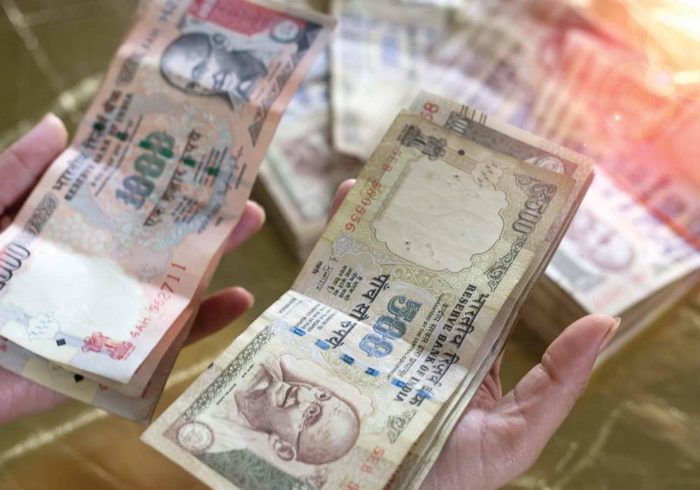
Demonetisation: A Major Factor For Internet-Enabled Lending
One factor that has played an integral role in the rise of an alternative fintech industry is demonetisation, instated on November 8, 2016. Post the ban on INR 500 and INR 1,000 notes, bank deposits underwent a discernible slowdown. Loans to SMEs and MSMEs reached an abrupt halt, forcing many businesses to seek other methods of financing. Last year, for instance, around 34% of P2P borrowers were actually business owners looking to expand without having to rely on banks.
The extreme shortage of cash following demonetisation caused Internet-enabled cashless transactions to sky-rocket. As reported, digital transactions increased 22% almost immediately after the ban came into effect. Mobile banking transactions grew 175%, while the amount of money transacted via Immediate Payment System (IMPS) increased 369% between October 2015 and October 2016.
In a way, demonetisation set the stage for an array of alternative fintech models that are slowly gaining traction in the borrowing and lending community. These consist of new-age trends such as micro-lending (like Billionloans), short-term payday loans (like EarlySalary that offers loans for a period of seven to 30 days), crowdfunding, and social lending.
Prominent players in the domain include ecommerce-related personal loan providers ZestMoney and CashCare. Bengaluru-based Capital Float and Lendingkart are known to offer loans to online sellers and small businesses. Krazybee and GyanDhan are two other startups that facilitate easy availability of education loans at zero collateral. Among all these alternative lending models taking India’s fintech industry by storm, peer-to-peer lending aims to stand tall as a viable and profitable model.
The Rise Of Peer To Peer Lending In India
The origin of P2P lending in India can be traced back to 2012 when Shankar Vaddadi and his team established i-Lend. The appeal of P2P lending lies in its convenience and efficiency. By eliminating the need for intermediaries, social lending platforms manage to offer high returns on investments as well as low-interest rates for borrowers, irrespective of market conditions. Currently worth $3.2 Mn (INR 20 Cr), the country’s peer-to-peer lending industry is projected to increase to around $4 Bn-$5 Bn by 2023, Plunge Daily reports.
The P2P lending space in the country has more than 30 specialised platforms, including Rajat Gandhi-founded Faircent, Mukesh Bubna’s Monexo, Rohan Hazrati-conceived Rupaiya Exchange, Senthil Natarajan-created OpenTap, Bhavin Patel’s LenDenClub, Ekmeet Singh-founded Lendbox, LoanBaba, IndiaMoneyMart, AnyTimeLoan, Cashkumar, i2iFunding, CapZest, and PeerLend.in, among others.
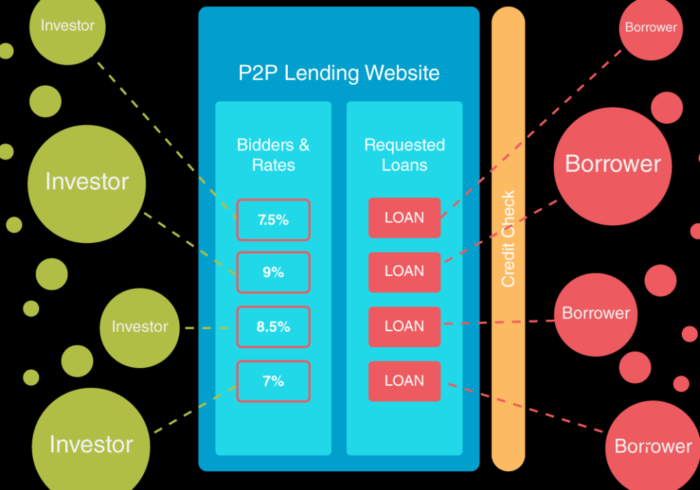
What P2P Lending Is All About
P2P lending is a type of debt financing that allows individuals as well as businesses to borrow money online, without having to rely on an official financial institution as an intermediary. In its 2016 “Consultation Paper on Peer to Peer Lending,” RBI defines P2P lending as a form of crowdfunding that entails issuing unsecured loans to borrowers via an online portal.
It is important to note here that not all crowdfunding activities belong to the category of P2P lending. The former basically refers to a process, in which people from different regions come together, often via an online platform like Kickstarter and Indiegogo, to raise money that eventually goes into funding a project, startup or any other kind of commercial endeavour. In peer-to-peer funding, on the other hand, borrowers confer with individual lenders directly to acquire personal as well as business loans.
At present, the entire gamut of P2P lending is handled by specialised online platforms that match lenders with borrowers based on their needs and demands. Because these companies operate online at low overheads, P2P lending promises higher returns for lenders as well as substantially lower interest rates for borrowers than traditional banking institutions.
Following are some of the services that P2P lending platforms provide in exchange for a fee:
- Matching borrowers with specific lenders and investors based on their investment criteria.
- Moderating interactions between both parties.
- Conducting background checks and due diligence on borrowers and lenders, including verification of bank account, employment status and income.
- Structuring credit models for loan approvals.
- Performing credit assessment and determining borrower credit risk.
- Handling payments and fund transfer from the borrower’s bank account to the lender and vice versa.
- Overseeing on-time loan repayment to prevent delinquency by appointing recovery agent.
- Helping borrowers with documentation and legal compliance.
In order to avail the service, borrowers are required to pay a fixed origination fee, while lenders often have to pay an administration fee, depending on the terms of the P2P lending platform. The interest rates are usually determined by the platform, but at times can be set as per mutual agreement between the lender and the borrower. Peer-to-peer lending companies are for-profit organisations that generate revenue from fees paid by borrowers and lenders. By contrast, traditional financial institutions make money by charging loan seekers higher interest rates than the original deposit rate, also known as net interest rate spread.
Traditionally, P2P lenders follow a reverse auction system that allows multiple investors to place bids on borrower’s loan proposal. The latter then gets to either accept or reject the offer, depending on their requirements. According to a research report titled “The Business Models and Economics of Peer-to-Peer Lending” (PDF), there are three basic peer-to-peer lending models at present: consumer lending, in which loans are issued to individuals; SME lending that provides funding to fledgeling businesses; and property lending. The last one can be disbursed to individuals as well as companies and is often used to pay for mortgages, residential refurbishment and commercial activities.
Why Is P2P Lending Space Becoming Popular In India?
In the last 10 years, technological innovations have paved the way for a myriad of alternative fintech models that strive to bridge the fast-widening gap between traditional banking institutions and fund seekers. Following are some important advantages of the P2P lending model:
- Easy, hassle-free registration and loan application process.
- Borrowers can avail loans at lower interest rates as compared to conventional financial institutions. One of the main reasons for this is low overhead costs required for operating online peer-to-peer lending platforms.
- Higher returns on investment for lenders. Unlike mutual funds and equity, P2P lending offers stable rates irrespective of prevailing market conditions. Faircent, for instance, consistently provides returns at more than 18% per annum.
- Less documentation as well as a shorter loan processing time. Digital lending platforms often help borrowers with documentation and legal compliance in exchange for a fee.
- Because loans are unsecured, borrowers with a low credit score can also procure funds. This eliminates the need for collateral, which is often required for traditional bank loans.
- Easy availability of loans for SMEs and MSMEs. In India, dearth of assets is a common problem faced by small businesses and startups. In such cases, banks tend to reject loans in the absence of heavy asset strength. This is where P2P lending comes in.
- Round-the-clock customer support that assists customers at every step of their way.
- Flexible liquidity plans without rigid lock-in periods.
- Fixed monthly payments of instalments from borrowers.
Global P2P Lending Market: History & Regulations
While the practice of social lending between friends and family has been around for centuries, the origin of P2P lending globally coincided with the financial crisis of the early 2000s. In the period prior to this, banks served as the primary money lending entity for individuals as well as businesses. In addition to demanding very high-interest rates, banks were notorious for rejecting loan requests of asset-light small businesses and people with bad credit scores.
The ensuing economic disaster of 2007-08 resulted in the disruption of this long-standing monopoly. The concomitant growth of social media and increased access to the Internet allowed people from different regions to interact virtually and share files through applications like Napster (for music) and Limewire (file sharing).
The defining moment in the history of P2P lending was the establishment of one of the world’s first online lending platforms Zopa in the United Kingdom in 2005.
Following the infamous bankruptcy declaration of Lehman Brothers in 2008, social lending practices like P2P lending emerged as viable alternatives to conventional financial institutions. Several new lending platforms cropped up including Prosper (US), Lending Club (US) and Funding Circle (UK). In 2015 alone, total lending through P2P platforms globally reached $5.68 Bn from a measly $2.84 Mn in 2012, according to data released by Peer-to-Peer Finance Association (P2PFA).
Globally, peer-to-peer lending forms more than 70% of all crowdfunding activities, as per reports by CrowdExpert. According to a study by accountancy firm KPMG in collaboration with the Cambridge Centre for Alternative Finance, the world’s P2P lending market is worth $130 Bn (as of October 2016). Growing at a rate of 51%, the domain will likely cross the $290 Bn mark by 2020, financial services firm Morgan Stanley predicts. In the United States, Lending Club, disbursed $20 Bn in Q2 2016; a sharp increase from the $33 Mn it issued during Q1 of 2009. Similarly, in the UK, thanks to big names like Zopa and Funding Circle, the industry is estimated to reach $9.42 Bn.
In the following section, we have provided a brief overview of the P2P lending market in different countries around the world:
United Kingdom
The first country to venture into the peer-to-peering lending space, the United Kingdom boasts a market worth over $9.42 Bn. In 2016, the industry reportedly grew two-thirds, thanks to big players like Zopa, RateSetter, Funding Circle, ThinCats, LendInvest, MarketInvoice, Landbay, and LendingWorks. Of the $9.42 Bn, $5.55 Bn was lent to businesses in different sectors, while the remaining $3.74 Bn was issued as personal loans to individuals. The world’s first P2P lender Zopa has handled transactions worth over $3.12 Bn since it was founded in February 2005. Peer-to-peer lending currently falls under the purview of the Financial Conduct Authority (FCA) in the UK, which has mandated a disclosure-based exit strategy to ensure loan repayment in case the platform itself collapsed.
US
The P2P lending trend in the United States dates back to 2006, when its digital lending marketplace Prosper was created. Boasting a yearly growth rate of more than 100%, the US peer-to-peer lending space is currently worth more than $32.8 Bn. In 2014 alone, $6.6 Bn was issued as loans to individuals as well as businesses; an astounding rise from $889 Mn in 2012. At present, the space is occupied by a number of companies such as Lending Club, OnDeck, SoFi, Avant, Kabbage, and LendUp. At the federal level, the Securities and Exchange Commission (SEC) is responsible for overseeing all social lending activities in the country. In keeping with its federal structure, the US government currently allows individual states to implement their own regulations pertaining to P2P lending. Among the states that have banned this practice are Texas, Ohio, and Iowa.
Canada
Peer-to-peer lending was legalised in Canada just last year, with the establishment of its first digital platform Lending Loop in October 2016. At present, Lending Loop offers up to $500K as loans to small businesses. Other players include Lendified, FundThrough, Vault Circle, and Lending Arch. The country currently follows an intermediary regulation model like the UK, Australia, New Zealand and Argentina. As per this model, P2P lenders are only allowed to serve as intermediaries.
China
Also referred to as the grey market, the Chinese P2P lending industry is supposedly the largest in the entire world, with a history that dates back to 2007. Valued at over $103.43 Bn (as of 2016), it is home to around 2,300 lending marketplaces that provide a wide variety of services. The oldest among them is Hong Kong-based WeLab. The largest player in the space is Lufax. Others include Ppdai.com, Credittease.cn and Wokai (shutdown). As per reports, total monthly P2P transactions soared to an all-time high of $29 Bn in August 2016. Despite the recent slowdown, the market is poised to expand to over $0.55 Tn by 2019, iResearch China predicts. To ensure lender security in P2P transactions, the Chinese Banking Regulatory Commission issued a set of guidelines for cashless lending in December 2015.
Australia
Australia’s peer-to-peer industry is only five years old. The market size is relatively small, with major players being Society One, Moneyplace, and ThinCats Australia. Created in 2012, Society One is currently the biggest fish in the pond. As per government law, however, every P2P lender should hold an Australian Credit Licence (ACL) to be able to engage in digital investment activities.
Challenges For P2P Lending Startups In India
Despite its many advantages, peer-to-peer lending comes with its own share of disadvantages, chief among which is the risk of bad investment. P2P lending marketplaces are essentially moderated platforms that offer lenders the freedom to choose where their money would go. Although companies have become more proactive when it comes to conducting borrower background and credit checks, the risk of loan delinquency still exists. In the UK, for instance, Quakle ceased operations due to a near-100% default rate in 2011. Between 2006 and 2008, around 36.1% of US-based Prosper’s total loans defaulted.
Lending Club’s default rate is reported to be 9.8% on riskier investments. Known for lending money to individuals with a less-than-stellar credit score, Estonia-based Bondora has a default rate of more than 70%. Lack of proper regulations and explosion of P2P lenders have given way to fraudulent companies, most famous among them being Yucheng Group-owned Ezubao. According to The New York Times, Ezubao swindled investors out of $7.6 Bn during two years of operations.
In the context of India, these risks are made more acute because of the lack of proper infrastructure. In a country with population over 1.31 Bn, only 220 Mn people have PAN cards – which are used to declare and file Income Tax returns. This makes the task of verification incredibly difficult.
Speaking on the subject, Jungkiu Choi, Head of Financial Institutions Practice, Asia Pacific at A T Kearney commented in June 2016, “The challenge in India is lack of credit infrastructure than regulations. The infrastructural issues include national identity cards, credit bureaus, identify or residence verification agencies and also collection issues.”
Furthermore, the main puppeteers in this realm are either technocrats or young entrepreneurs. During his 14-year-long career at Times of India, Faircent-founder Rajat Gandhi helped develop a number of online portals, including Timesjobs.com, Simplymarry.com and Magicbricks.com. Rohan Hazrati, founder of Rupaiya Exchange, has previously worked at consultancy firms. The lack of sound understanding of the fintech market could therefore increase the risk involved.
To that end, the RBI has suggested that a reasonable proportion of P2P lending startup Board members have a financial sector background. P2P players mostly depend on credit bureaus for assessing the borrower’s creditworthiness. In India, however, not all borrowers are part of credit bureaus, making the verification process highly unreliable.
Following in the footsteps of other countries like the UK and US, the Reserve Bank of India has taken it upon itself to serve as the regulator of peer-to-peer lending platforms. The norms, which will be released within July 2017, could help facilitate the industry’s growth, while also reducing the risks and vulnerabilities associated with it. In an exclusive interview with Inc42, Monexo CEO Mukesh Bubna said:
“The RBI guidelines will be an important moment for the P2P sector in India. A clear set of rules and expectations from the regulator will provide much needed clarity, set industry standards and provide further confidence to investors. From the draft consultation paper, it is expected that the RBI will play the role of a vigilant regulator focused on ensuring that platforms pursue prudent risk management practices, be transparent about credit performance and have in place a viable business continuity plan.”
Editor’s Note
As claimed by Minister for Electronics and IT, Ravi Shankar Prasad, India’s digitised economy will likely grow three-fold to $1 Tn by 2024 from its current $270 Bn. In fact, India is said to have the greatest market potential in the entire world, as determined by the Harvard Business Review (HBR). Over the last two years, the mobile wallet industry has emerged as the flag-bearer of the Indian fintech movement. Given its current growth rate, it is expected to transform into a $6.6 Bn market by 2020, according to a report by TechSci Research.
Recent developments in Indian fintech have brought peer-to-peer lending to the forefront. The once-small vertical has finally emerged as a promising, viable and relatively safe fintech model that promises low interest rates for borrowers and high returns for lenders. Thanks to congenial government policies and the emergence of more than 30 social lending marketplaces, the industry is well on its way to becoming a $4 Bn-$5 Bn market by 2023.
Despite the many challenges, OpenTap co-founder Senthil Natarajan is optimistic about the industry’s future in India. He recently told Inc42, “The potential for the industry is promising, based on the simple fact that there are over 70 million underbanked people in the country, who are needlessly denied credit. Even at full performance, all P2P companies put together – we would still be scratching the surface in terms of fulfilling the current demand.”
This article is part of a series dedicated to the analysis of the P2P lending landscape in India. In the next article, we will delve deeper into the Indian P2P lending landscape, focussing on the plethora of startups that have come up in recent years. In doing so, we look to evaluate the impact that peer-to-peer lending has had on the country’s burgeoning fintech revolution.








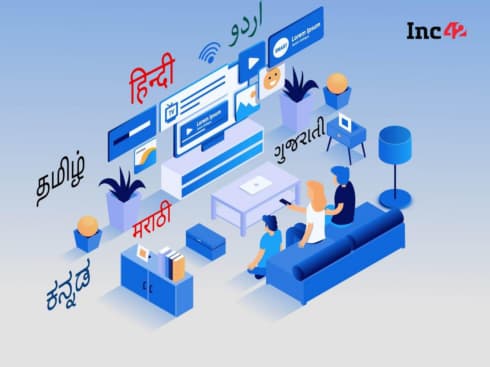

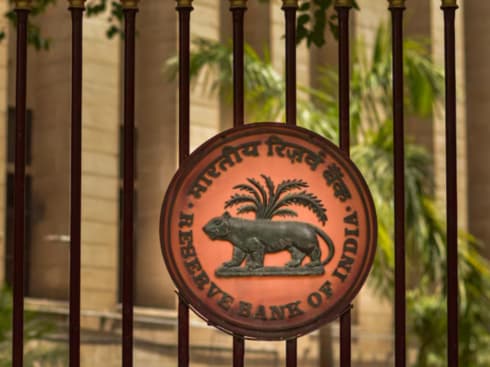




















 Ad-lite browsing experience
Ad-lite browsing experience